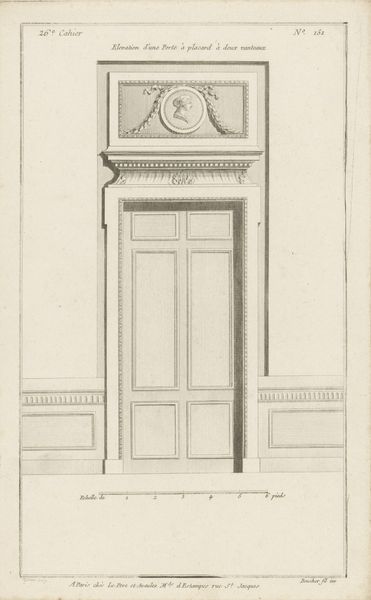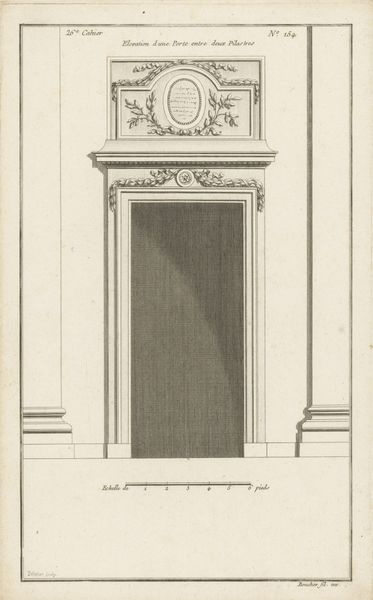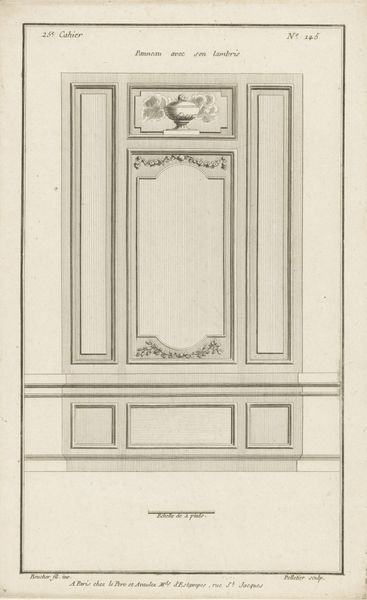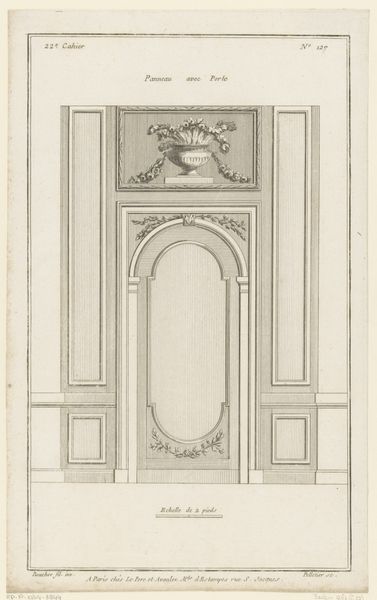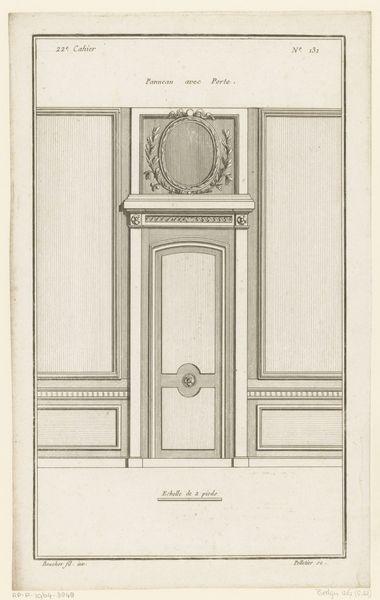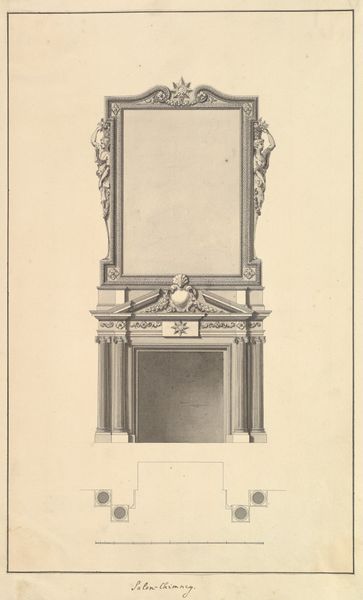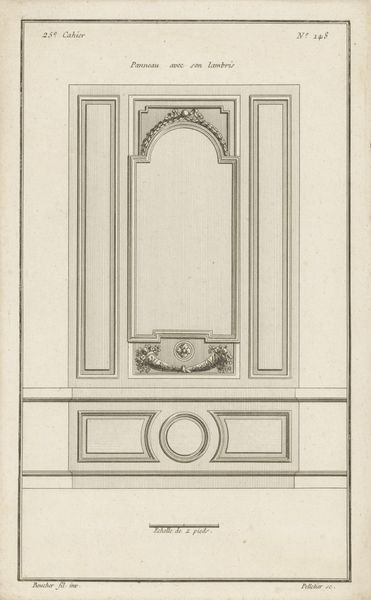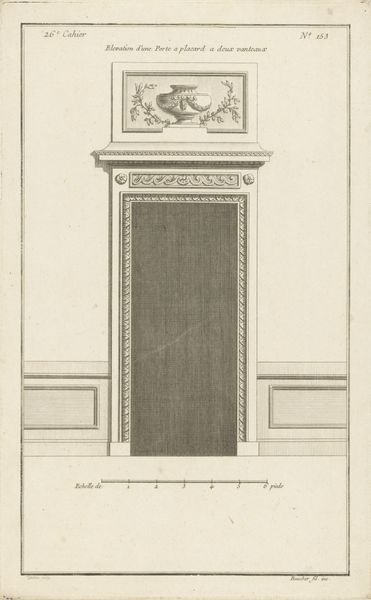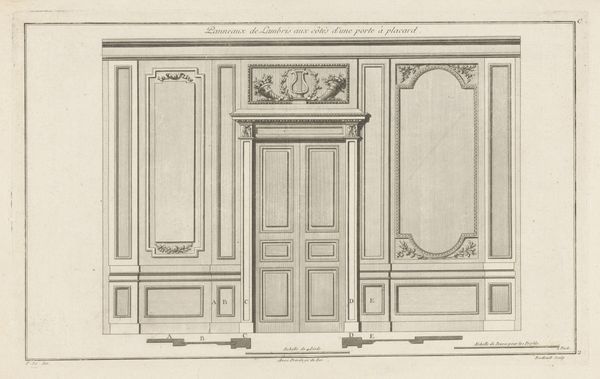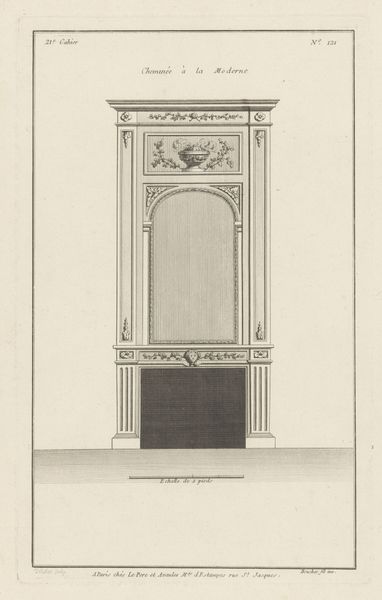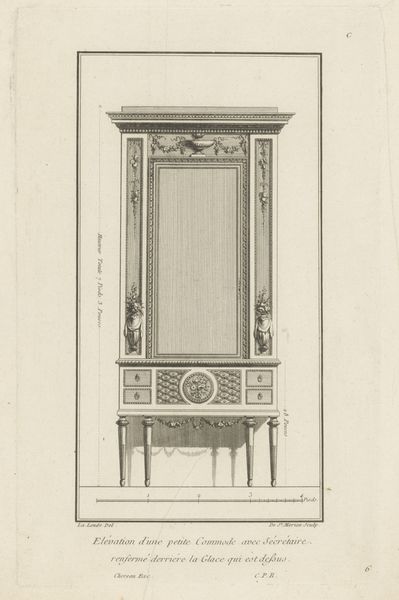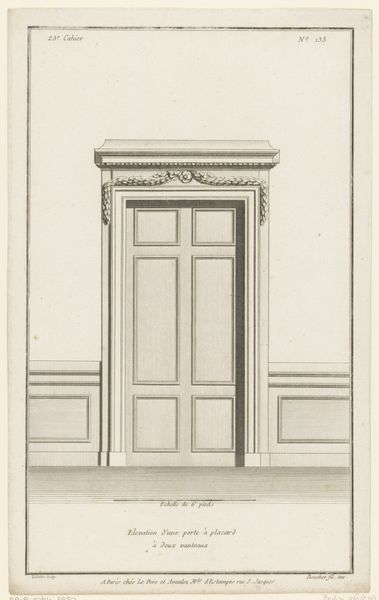
drawing, paper, engraving, architecture
#
drawing
#
neoclacissism
#
classical-realism
#
paper
#
form
#
geometric
#
line
#
academic-art
#
engraving
#
architecture
Dimensions: height 329 mm, width 203 mm
Copyright: Rijks Museum: Open Domain
This drawing, conceived by Jean Pelletier, features a door embellished with putti and a medallion. The putti—those chubby, winged infants—are derived from classical antiquity, where they represented love and divine presence. Here, they flank a medallion, a circular form often used to display portraits or inscriptions. The garland motifs adorning the door are equally significant, symbolizing celebration, joy, and the cyclical rhythm of nature. These cherubic figures, however, are not confined to this single image. We find their kin scattered across Renaissance paintings, Baroque sculptures, and even in contemporary advertisements. Their continued presence attests to the enduring power of cultural memory, where symbols are passed down through generations, each time gathering new layers of meaning. Their recurrence speaks to an archetypal desire for innocence and connection to the divine. The motif has changed over time, from deeply religious to lightly sentimental. The combination of these elements creates a harmonious yet charged visual field, subtly influencing our emotions and tapping into a collective unconscious.
Comments
No comments
Be the first to comment and join the conversation on the ultimate creative platform.
